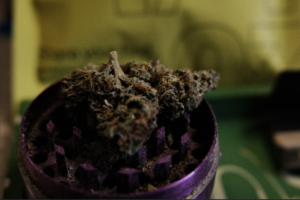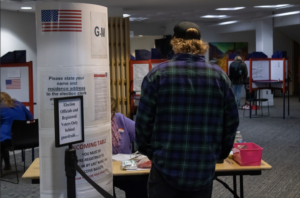Earlier this month, several prominent universities found that over 50 individuals were involved in various college admission bribery scandals. Between the years of 2011 and 2018, parents were accused of paying more than $25 million in bribes and participating in doctoring photos, falsifying test scores and fabricating essays in order to get their children into top colleges and universities. As the story unfolded, it was revealed that prominent celebrities, including Felicity Huffman and Lori Loughlin, were involved and are now facing federal charges. While the names involved might have taken some by surprise, the fact that the meshwork of the college admissions process is laced with the influence of money is no shock.
In the past decade, the number of colleges that offer early decision has risen. According to the Collegeboard website, approximately 450 colleges now use early decision or early action plans. However, early decision, in particular, offers an unfair advantage to students of higher income backgrounds.
Early decision is a special process that accelerates the college application process. Students are allowed to apply to only one early decision college in November, instead of the normal December deadline. Then, in mid-December, schools send out their decisions. If the answer is no, students have two weeks to apply to other schools. If the answer is yes, the student is required to attend the college. This is usually enforced through high school counselors, who, once aware of a student’s early decision application, refuse to send out official transcripts to other schools. This process benefits higher-income students and discourages those from lower-incomes. Students who apply through early decision must have the ability to commit to a usually prestigious and pricey school without knowing the financial aid package they may or may not receive.
Students who don’t apply through early decision also have a smaller chance of being accepted. According to The Atlantic, Yale admitted 37 percent of early decision students, and only 16 percent of regular applications; Columbia admitted 40 percent of early decision applications and only 19 percent of regular admission students; and Hamilton admitted 41 percent of ED candidates and only 27 percent of regular admission students in 2011.
This process that has become normalized in the high stakes and competitive atmosphere of college admissions is simply a societal-deemed above board means of utilizing access to money to increase a student’s chances of being accepted at a school.
Beyond the admission process itself, money also plays a role in SAT and ACT scores. Despite the controversy around whether SAT scores should play as large of a role as they do in the acceptance process, SAT scores are often deciding factors for colleges and universities. The Princeton Review, an online organization that offers tutoring, test preparation and admissions counseling, guarantees a 100 point score increase for students who invest $500 in tutoring. Their college prep “SAT 1400+ Score Guaranteed” class starts at $1,200.
When students, or more specifically, their parents, exploit the college admission process, they are perpetuating the discrepancies in those who have access to higher education. The Atlantic found that “many schools don’t want more low-income students because they won’t be able to pay for them without a major overhaul of school funding practices,” and because of this, they implement “full pay” student policies.
This means that colleges actively recruit students who can attend their institution without needing financial aid assistance. Inside Higher Ed, an organization that provides an analysis of higher education issues, took a survey in 2011 that found 35 percent of admission directors stated that they had increased the efforts of encouraging “full pay” students. This also includes an “admit-deny” strategy, where students will be accepted to a school but denied a large enough financial aid package in order to discourage them from enrolling.
Students coming from upper-class families found by the Center for Education Policy Analysis at Stanford to be seven or eight times more likely to enroll in a more selective institution than students from the poorest 20 percent of households. Despite the fact that high-income students account for only one-third of high-achieving graduating high school students, they make up roughly 74 percent of students at the top 146 colleges across the nation. This implies that prestigious institutions are not strictly looking at merit, but instead a student’s ability to pay.
Unfortunately, there is no clear solution to fix this problem. The road to higher education in our country is littered with socio-economic roadblocks that unfairly hurt and target lower income and racially diverse students. But it should come as no surprise that the rich are bribing their way into schools, as the college admission process has found a way through early decision and specialized test prep to normalize the role of money in acceptance decisions.
This article has been updated.








